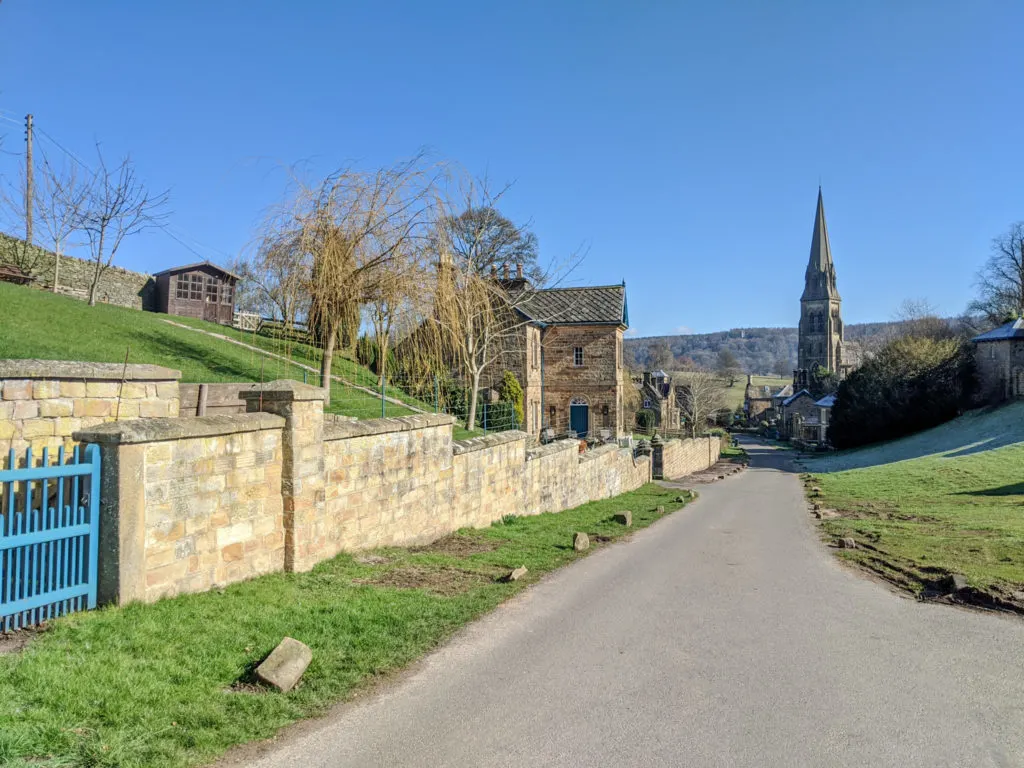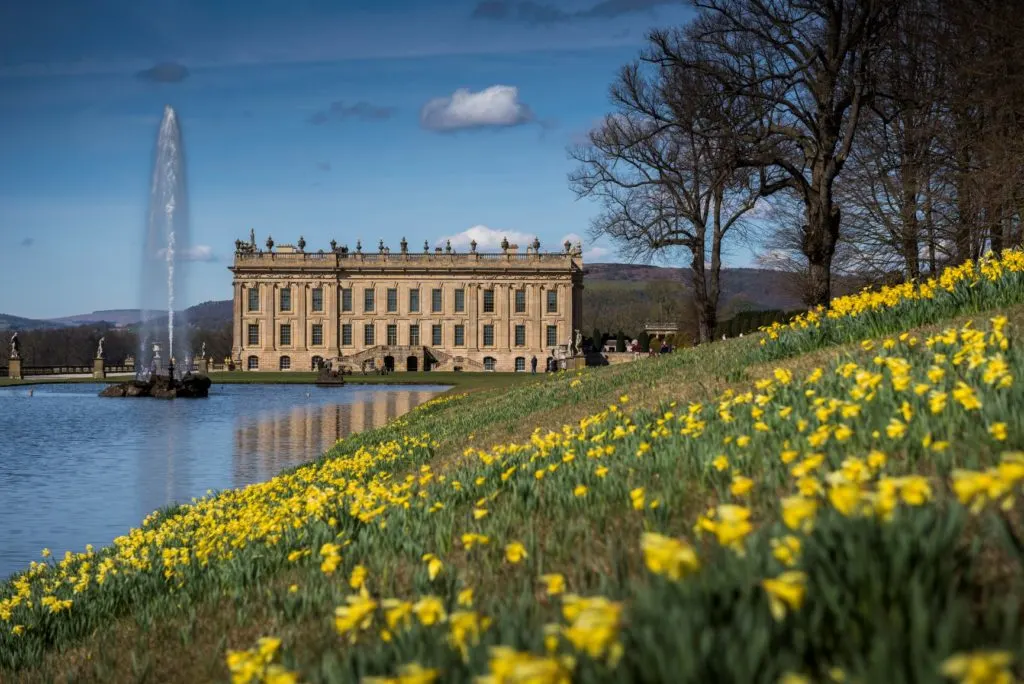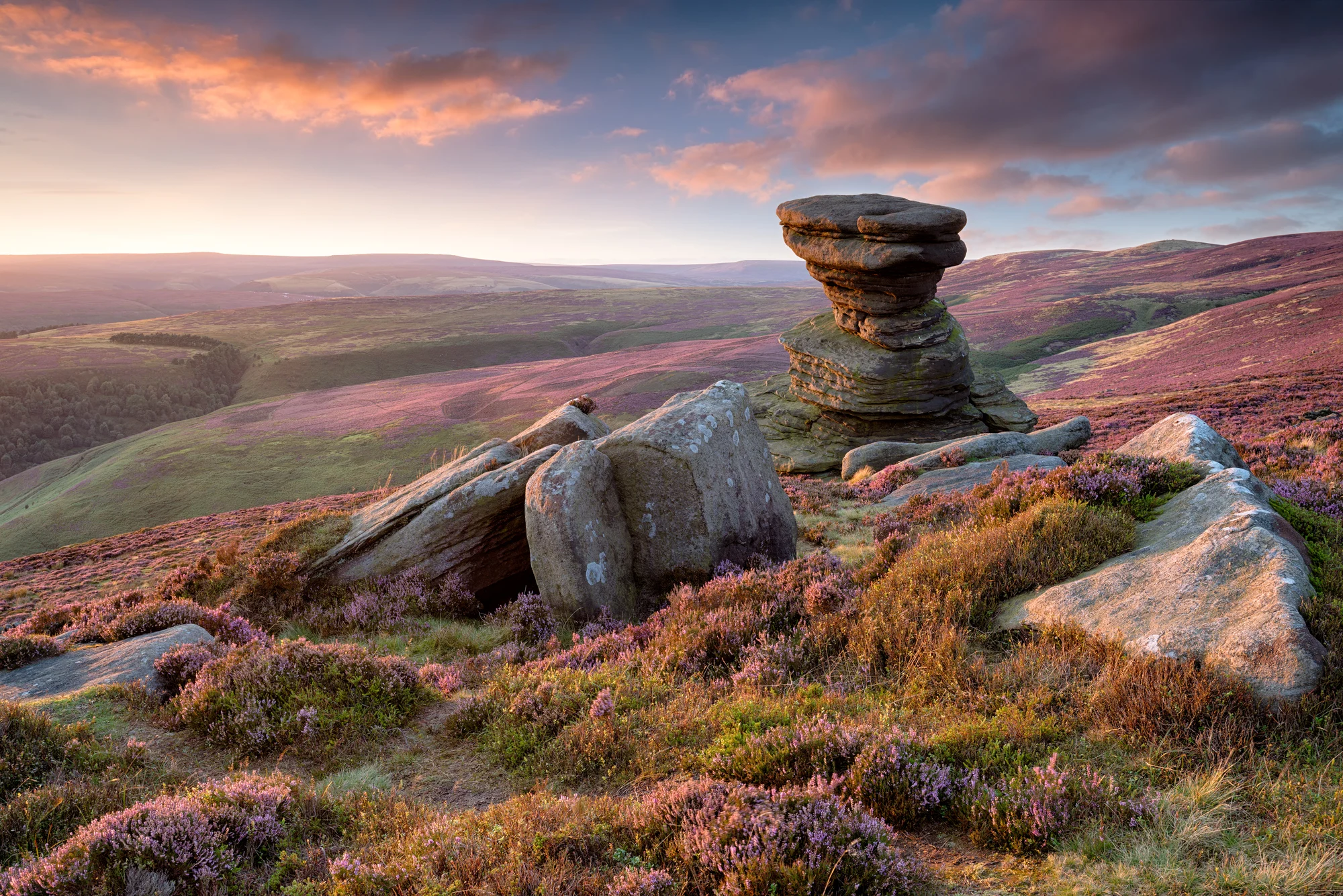If you’re planning a visit to the Peak District and want to know more about the area, then check out these top facts about the Peak District! You can also download for free some Peak District themed activity sheets for kids here.
Or perhaps you want to dive straight in with our Peak District Quiz?
16 facts about the Peak District
1. The Peak District was officially the first UK National Park established in 1951.
2. The Peak District covers five counties: Derbyshire, Cheshire, Staffordshire, Yorkshire and Greater Manchester.
3. There are no sharp mountain peaks in the Peak District. The name is thought to derive from the Pecsaetan, an Anglo-Saxon tribe who settled the area.
4. Bakewell Pudding is VERY different from Mr. Kipling’s Bakewell Tart. Head to Bakewell to taste the real thing!
5. The village of Edensor was originally much closer to Chatsworth House. The Fourth Duke of Devonshire felt that the village spoiled his view so he had the entire village (apart from one house) moved!

6. The national parks symbol is a millstone. Quarries have been operating here since prehistoric times and hundreds of millstones still lie scattered across the national park.
7. The highest point is Kinder Scout at 636 metres (2086 ft).
8. There are lots of caves in the Peak District at the tallest is Titan Shaft in Castleton, which is 141.5 metres (464 ft) tall. This is taller than the London Eye! And also the largest known shaft of any cave in the British Isles, discovered on 1st January 1999 by local cavers.
9. There is a cave called the Devil’s Arse near Castleton! So called because of the flatulent-sounding noises from inside the cave when flood water is draining away.
10. In 1665, the village of Eyam had to self-quarantine to prevent the spread of the bubonic plague after a flea-invested bundle of cloth arrived from London.

11. Despite a lack of historical evidence for his existence, Robin Hood’s friend Little John is reputed to be buried in a churchyard in the village of Hathersage, Derbyshire. A modern tombstone marks the supposed location of his grave, which lies under an old yew tree.
12. Chatsworth, Haddon Hall, Lyme Hall, and North Lees Hall have all been used as sets for various adaptations of Pride and Prejudice.

13. Britain’s oldest long-distance national walking trail, the Pennine Way, starts at Edale in the Peak District to Kirk Yetholm in the Scottish Borders region. You can walk the entire 431 km, or you may just want to try out these short and easy Peak District walks.
14. People have been farming the land of the Peak District for 6000 years. Almost 90 percent of the national park is still farmland, and there are around 1800 farms.
15. Buxton is famous for its geothermal spring which has a temperature of 28°C. Mary Queen of Scots used Buxton’s thermal water to cure her rheumatics. The town has nine wells, the most famous one is St Ann’s Well, and Buxton is where that famous bottled water comes from.
16. Fossil remains have been found in the caves of the Peak District from the time of the dinosaurs. Check out the giant Ichthyosaur at the Heights of Abraham.
Are you ready now to take our Peak District Quiz?
You may also like to read:
Best days out in the Peak District
Easy Peak District walks
Peak District activity sheets for kids

